Wall Art Size Guide: Perfect Sizes for Every Room
Key Takeaways
- Aim for balance: Over furniture, choose art that’s roughly 1/2–2/3 the furniture width; on blank walls, fill about 60–75% of the wall width;
- Hang smart: Keep artwork centers around 57–60 inches from the floor and 6–12 inches above nearby furniture;
- Plan the layout: Treat gallery walls as one “visual block,” keep 1–2 inches between frames, and test with tape, paper cutouts, or the Mixtiles preview;
- Start modular: Mixtiles’ lightweight, adhesive, repositionable tiles make it easy to scale from a small grid to a statement wall without nails or damage.
Choosing the right wall art size is the fastest way to make your space feel intentional. In this wall art size guide, you’ll learn simple rules for sizing over furniture, filling blank walls, planning gallery grids, and testing layouts before you hang. We’ll also show you how modular, removable Mixtiles make it easy to design and refine your wall. No nails, no stress, just perfectly scaled art.
Design a wall gallery in minutes with Mixtiles Photo Tiles, Canvas Prints, and ready‑to‑hang Gallery Wall Kits.
What are the standard wall art sizes and how do they translate on your wall?
Most wall art sizes in the United States fall into small, medium, large, and oversized categories measured in inches. Keep in mind frames and mats add to art dimensions, and aspect ratio affects how a print sits on your wall.
Standard wall art size chart (sizes in inches and centimeters)
|
Category |
Typical Print Sizes (inches) |
Typical Print Sizes (cm) |
|---|---|---|
|
Small |
8×10, 11×14, 12×16 |
20×25, 28×36, 30×40 |
|
Medium |
16×20, 18×24, 20×24 |
40×50, 45×60, 50×61 |
|
Large |
20×30, 24×36, 30×40 |
50×76, 61×91, 76×102 |
|
Oversized |
30×45, 36×48, 40×60 |
76×114, 91×122, 102×152 |
Small vs. medium vs. large vs. oversized at a glance
Small prints are accents that shine in tight nooks, shelves, and layered groupings. Medium art sizes are versatile; a single 18×24 can carry a small room or blend seamlessly into a gallery. Large formats anchor spaces: think a 24×36 over a sofa or bed. Oversized pieces (36×48 and up) create instant focal points and simplify your wall display to one powerful statement.
Square vs. vertical vs. horizontal pieces
Vertical (portrait) art elongates a room and is great for narrow walls; horizontal (landscape) art widens a space and calms long rooms; square pieces simplify grids and size comparison because the frame size stays consistent in both directions.
How big should wall art be over your sofa, bed, table, or fireplace?
Choose wall art roughly 1/2–2/3 the width of the furniture and hang it 6–12 inches above. For comfort and a gallery feel, center your art at about 57–60 inches from the floor. If you prefer multiple art prints, treat the whole arrangement as one block that follows the same size guide.
Sofas and sectionals
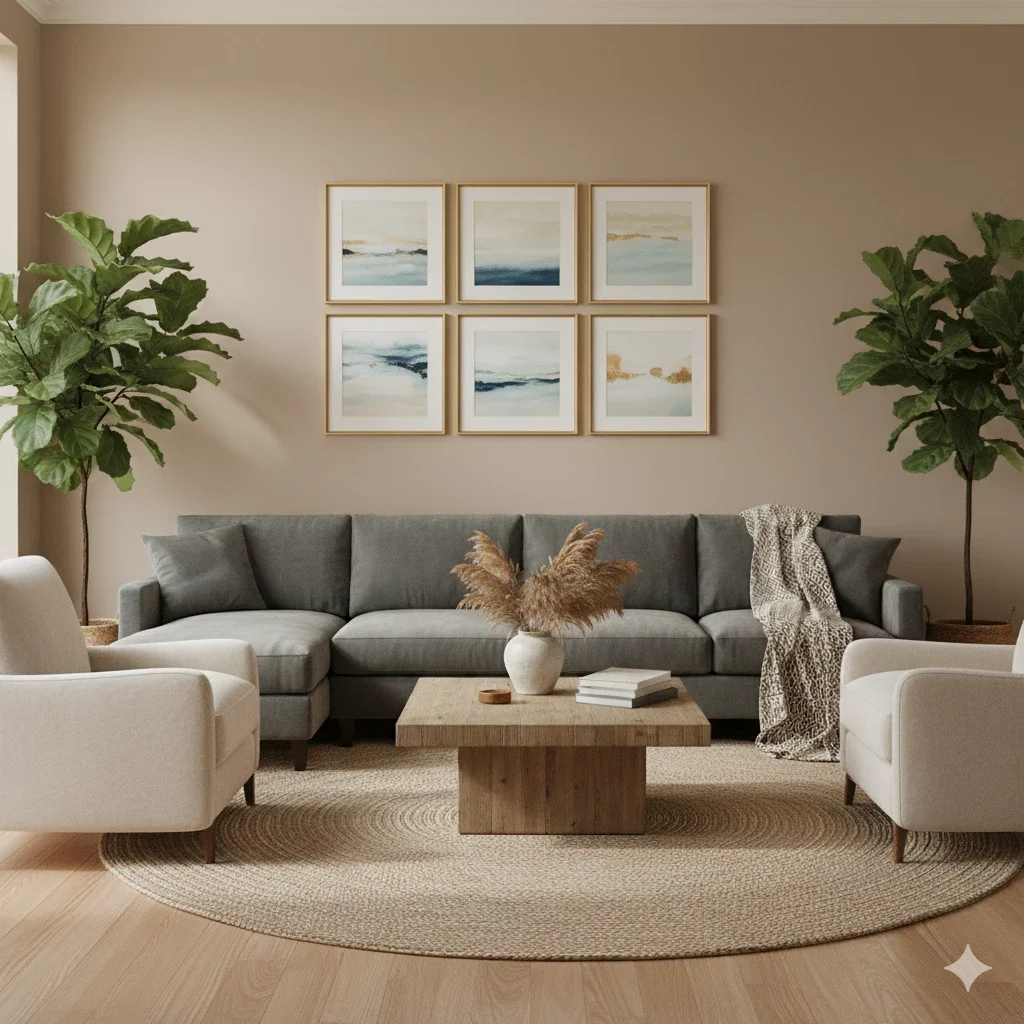
A 72–84 inch sofa typically looks balanced with a 40–56 inch wide art size or a grid of 3–6 Mixtiles spaced 2–3 inches apart (think 8x8 canvas prints or 12x12 canvas prints for example). For a 96 inch sectional, try a wide horizontal canvas size like 24×36 or a double row grid (e.g., 4×2 tiles) to match the scale. An extended horizontal layout keeps the composition aligned with the furniture’s length.
Beds (twin, full, queen, king)
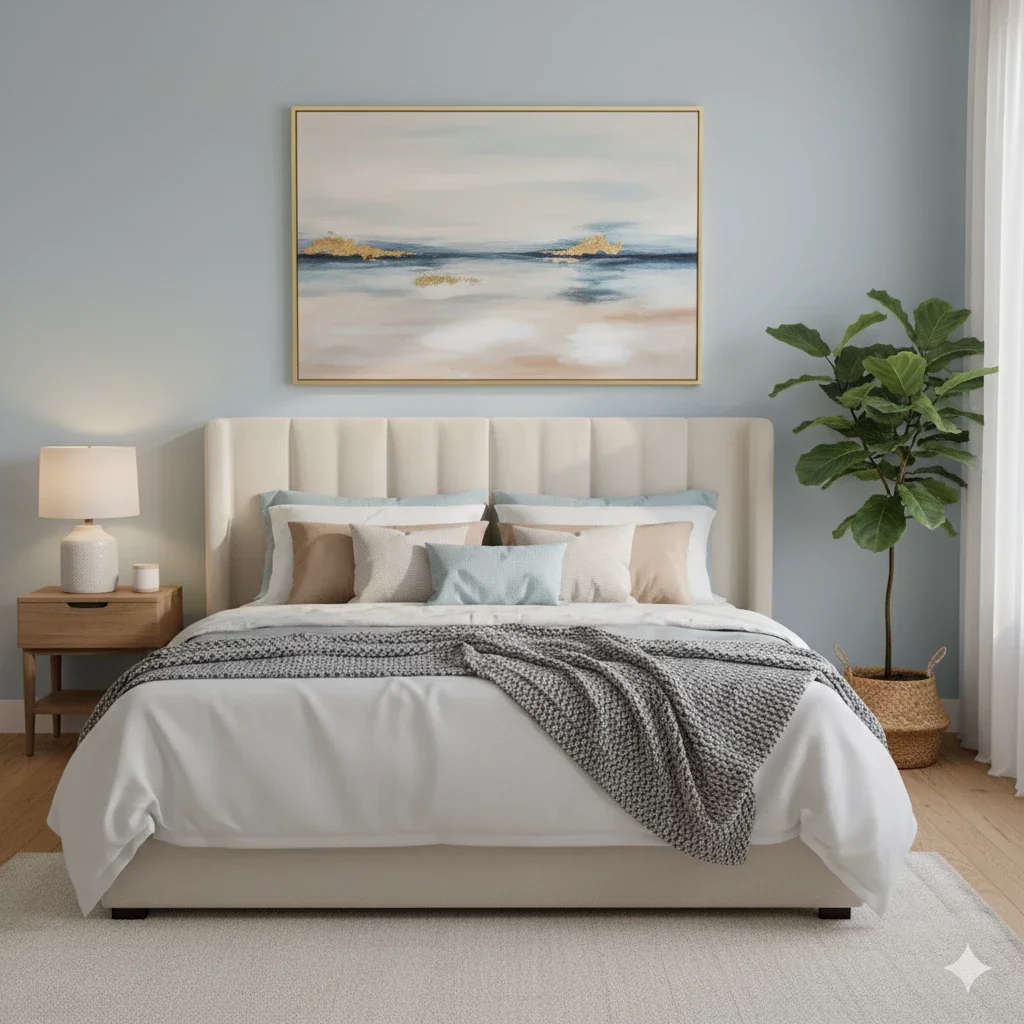
Above a twin or full, 30–41 inches of total width feels right; over a queen, aim for about 34–45 inches; a king bed can handle 43–57 inches without overwhelming the headboard. Keep frames 6–10 inches above the headboard and consider ceiling height; taller rooms welcome stacked rows or larger print sizes.
Dining tables and consoles
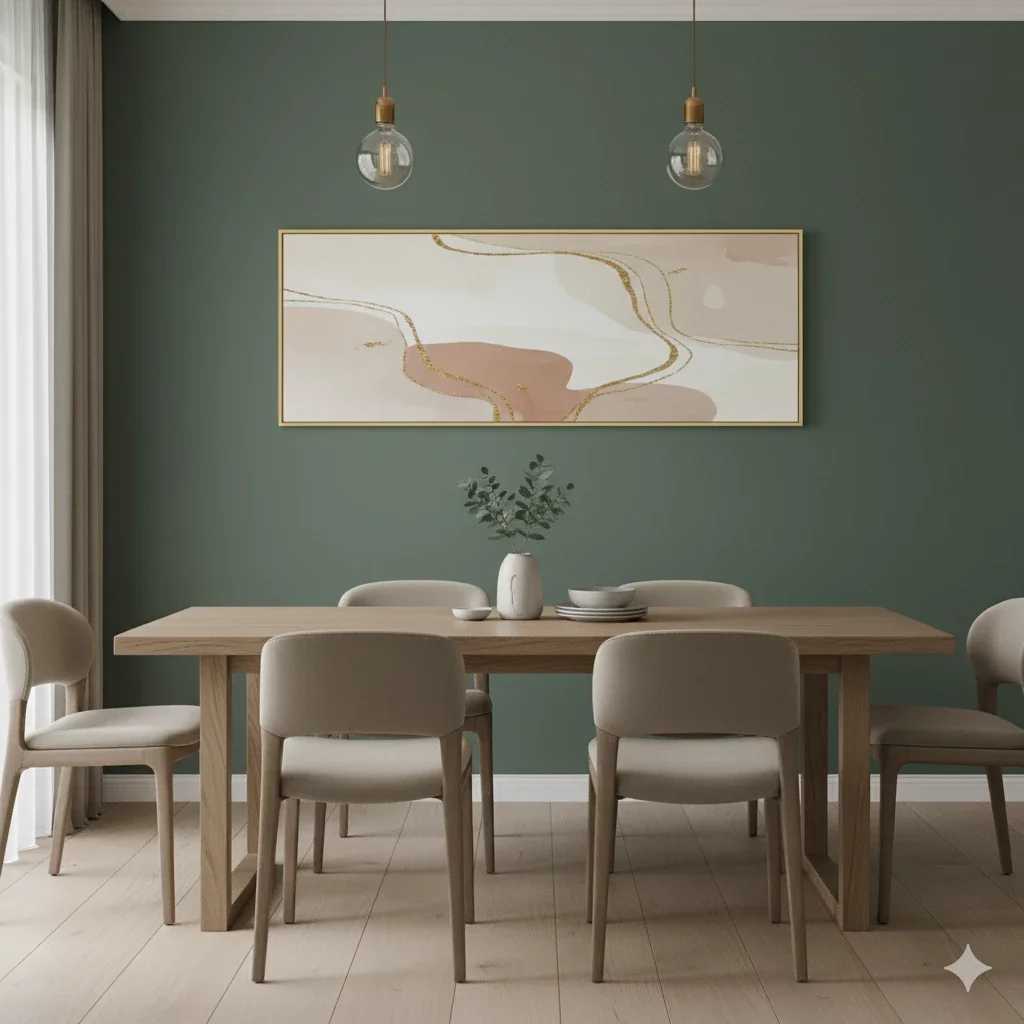
Maintain sightlines by choosing a wider, lower profile piece (e.g., 20×30 or 24×36) or a tidy 3×2 Mixtiles grid. In dining rooms, horizontal art stabilizes the composition and mirrors the table’s aspect ratio for a cohesive interior design moment.
Fireplaces
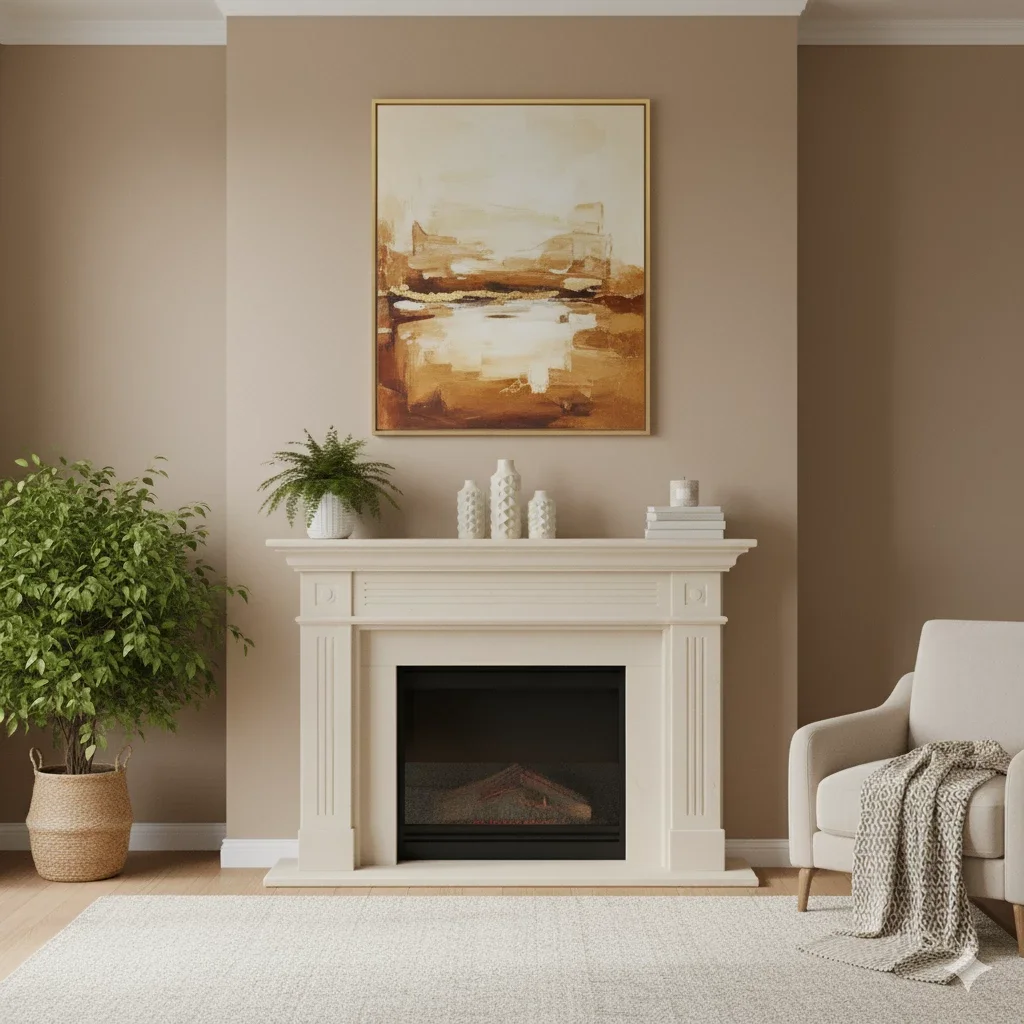
Match the art print width to the fireplace opening for a clean, standard proportion. Leave breathing room above the mantel and avoid frames so tall that they touch crown molding; a balanced 18×24 or 24×36 often hits the sweet spot.
How big should wall art be on a blank wall?
Fill about 60–75% of the wall’s width and keep the art’s center near 57–60 inches high. Taller walls can support multiple rows, while modest rooms benefit from one confident piece or a tight grid for a polished, easy display.
Quick calculations you can reuse
Use these two shortcuts to choose the best sizes with confidence:
- Target width: Wall width × 0.6 to 0.75 = Ideal art or gallery block width;
- Grouped layouts: Include spacing when you measure the total block so your size comparison chart aligns with the wall space.
Planning a gallery wall or grid? How many pieces do you need, and how should you space them?
Treat the gallery as a single rectangle that follows the same wall art size rules. Keep spacing consistent: 1–2 inches between frames delivers a modern look and makes alignment easy. Measure the full block (art plus gaps) to match your target size.
Square grids made easy with Mixtiles
Square tiles simplify sizing because your frame size chart is the same vertically and horizontally. Start with a 2×2 or 3×2, then add rows or columns as your collection grows. Mixtiles’ adhesive mounting lets you tweak placement, swap art prints, and scale from small to statement without tools.
Mixed gallery walls
Combine different sizes, orientations, and frames, but unify the design with consistent spacing or a shared color palette. If you’re looking for a dependable wall display guide, these layouts are crowd‑pleasers:
- Classic grid: Even rows and columns for a crisp, gallery feel;
- Linear rail: A straight row above a sofa or console for a modern wall moment;
- Staircase stagger: Ascending frames that track your steps and sightlines;
- Salon mix: Eclectic shapes arranged around a centered anchor piece.
Build a custom photo gallery wall with Mixtiles Gallery Wall Kits: templates, print sizes, and spacing made simple.
How do you test sizes before hanging (without putting holes in the wall)?
Preview your design at true scale before you commit. Here’s the easiest ways to test and adjust:
- Outline with painter’s tape;
- Tape paper cutouts to the wall to simulate frame sizes in inches;
- Use the Mixtiles app or website to visualize layouts and swap art dimensions.
How do ceiling height, room size, and viewing distance affect scale?
Higher ceilings, longer rooms, and greater viewing distances all support larger art sizes. Shorter ceilings and intimate spaces benefit from tighter grids or horizontal compositions that keep the room feeling calm and proportional.
When to go oversized (and when to keep it minimal)
Go oversized in spacious living rooms, entryways, and open‑plan spaces where a bold anchor simplifies the design. Keep it minimal in bedrooms and hallways to preserve serenity and flow. If you’re unsure, start with a medium canvas and expand to a 2‑row grid.
Can you break the rules and still get great results?
Absolutely. A deliberately small art print on a wide wall can create poetic negative space; off‑center placements can spotlight a reading nook; leaning frames can feel relaxed and sculptural. The key is to test first and iterate. Mixtiles’ peel‑and‑stick mounting is renter‑friendly, safe for most painted drywall, and easily repositionable; no nails, no patchwork. For textured brick or rough plaster, consider a smooth backing panel for best adhesion and longevity.
Sizing wall decor doesn’t have to be complicated. Use this wall art size guide to choose 1/2–2/3 widths over furniture, fill 60–75% on blank walls, and keep centers at 57–60 inches. Design galleries as one cohesive block with clean spacing, then scale with confidence using Mixtiles Photo Tiles, Canvas Prints, and Fine Art Prints.
Ready to create your gallery wall? Start designing in the Mixtiles app: order adhesive, repositionable tiles delivered to your home and enjoy an effortless, damage‑free display.
Frequently Asked Questions
How do I figure out the right art size for my wall?
Measure wall width and target 60–75% of it for your total art or gallery width. Over furniture, aim for 1/2–2/3 of the piece’s width. Keep the center around 57–60 inches high. Include spacing (1–2 inches) in your measurement, and test with tape or the Mixtiles preview.
What is the 2/3 rule for wall art, and when should I use it?
The 2/3 rule means your artwork (or gallery “block”) should be about two‑thirds the width of the furniture below it. It’s ideal above sofas, beds, and consoles. Maintain 6–12 inches of clearance above the furniture and treat grouped pieces as one visual unit.
How do I create a simple wall art size guide for my room?
Do three quick steps: 1) Measure the wall; target 60–75% width. 2) Mark a center line at 57–60 inches high. 3) Plan 1–2 inch gaps for galleries. Mock up with painter’s tape or paper cutouts, or use Mixtiles’ app to preview true‑to‑scale layouts.
What is the 57‑inch rule for hanging art?
The 57‑inch rule sets the artwork’s center at 57 inches from the floor (roughly average eye level) so pieces feel anchored and cohesive. Adjust to 58–60 inches for taller rooms or hang 6–12 inches above furniture while keeping the overall center near eye level.

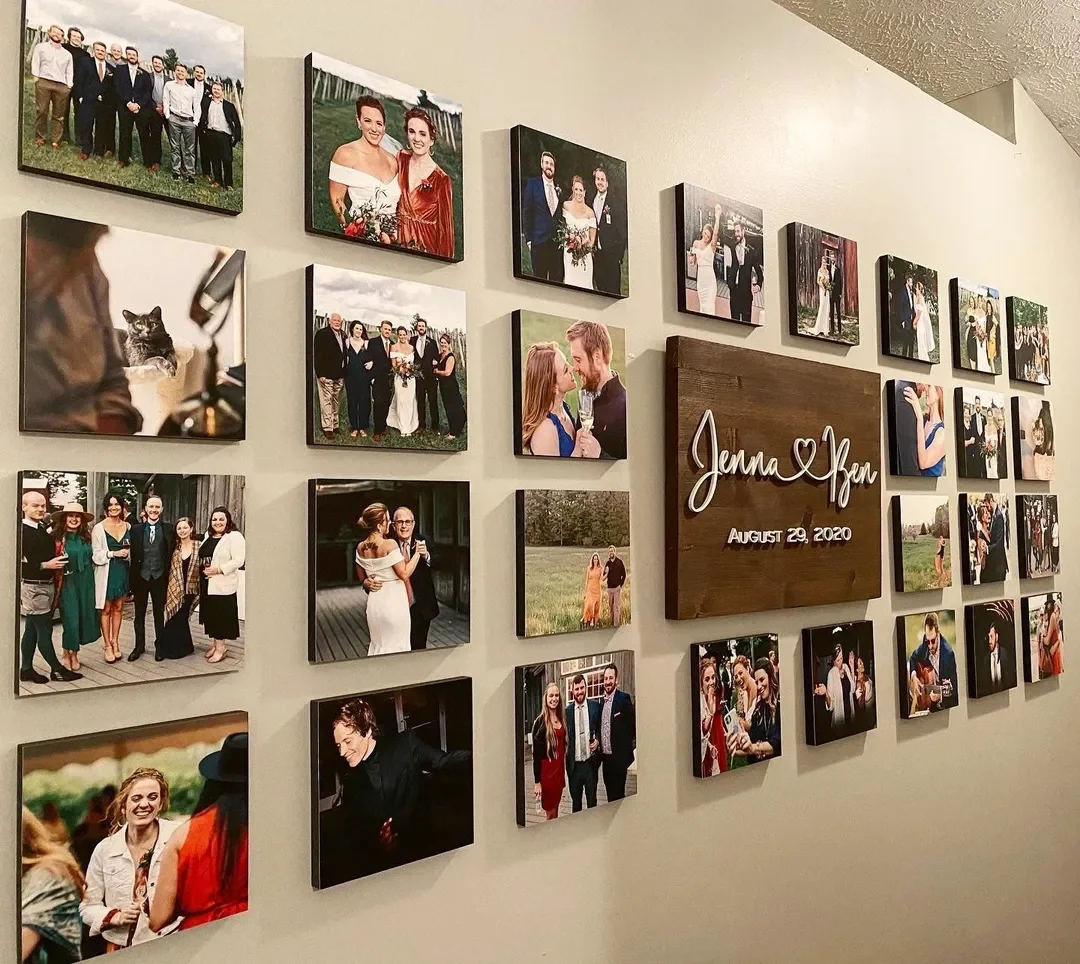
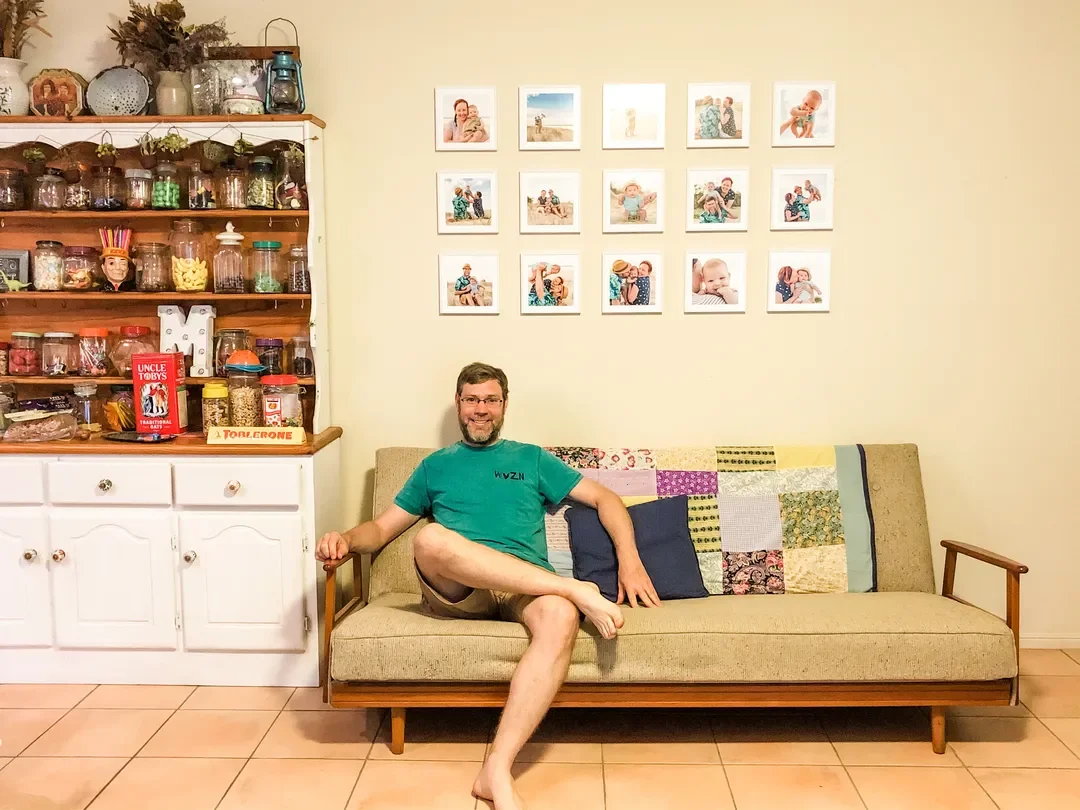
Be first to know — deals, news & decor ideas.
By clicking you agree to the Terms of Use & Privacy Policy
